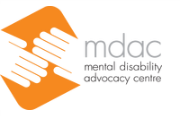Indicator 1(A): How many people with mental disabilities live in institutions?
Conclusion:
Approximately 25,000 adults with disabilities are required to live in institutions in Hungary.[7] Since ratification of the CRPD, there has been no real progress in realising the right to live in community for the vast majority.
Explanation:
According to the most recent data available from the Hungarian government from 2013, 16,024 people with disabilities – predominantly people with intellectual disabilities[8] - and 8,760 people with mental health issues lived in residential social care institutions.[9] According to government data from 2011, there were 303 homes and temporary homes for people with disabilities and 87 homes for psychiatric patients (see Glossary).[10] The number of people in institutions has remained unchanged for the last decade.[11]
The number of people with disabilities living in ‘group homes’ (see Glossary) grew from 123 to 1,567 in 11 years (between 2000 and 2011). In the same time period, the number of people with mental health issues living in group homes grew to 294.[12] Yet, many of these group homes were actually built on the grounds of larger institutions,[13] reflecting their institutional model.
There was no significant improvement in the situation of children with mental disabilities in institutions either. In 2013, the United Nations expressed concern about the large number of children receiving institutional care instead of living at home.[14] It called on the government to promote and expand community-based services to ensure that children with disabilities can live with their families.[15]
[7] Hungarian Central Statistical Office, Hungarian Statistical Yearbook 2011, table 3.5.25, 129, available at http://www.ksh.hu/docs/hun/xftp/idoszaki/evkonyv/evkonyv_2011.pdf, (last accessed: 23 September 2014 ). Hungarian Central Statistical Office, Evaluation of the 2011 Census – People with disabilities, table 1.7, 18, available at
http://www.ksh.hu/docs/hun/xftp/idoszaki/nepsz2011/nepsz_11_2011.pdf (last accessed: 23 September 2014).
[8] Tamás Gyulavári, Zsolt Bugarszki, Nóra Jakab, Vanda Katona, Fundamental Rights situation of persons with mental health problems and persons with intellectual disabilities: desk report Hungary, 8, available at http://www.humanconsultancy.com/_layouts/15/WopiFrame.aspx?sourcedoc={FCFE4AAF-1B5E-4E29-AC8E-9D2EB763E45A}&file=HU-FRA%20MH%20-%20final.doc&action=default (last accessed: 23 September 2014). Approximately 14,000 people with intellectual disabilities lived in institutions in 2007, based on the research of Kézenfogva Alapítvány (Hand in Hand Foundation), while the total number of people living in homes for people with disabilities were 16,000. See: Tamás Verdes, “A ház az intézet tulajdona” (The House is the Property of the Institution), Esély, 4 (2009): 92.
[9] Hungarian Central Statistical Office, Table 2.4.15. A tartós bentlakásos és átmeneti elhelyezést nyújtó szociális intézményekben ellátottak az intézmény típusa szerint (1993–2013) (The number of residents in residential social care homes according to the type of institution (1993-2013)), available at http://www.ksh.hu/docs/hun/xstadat/xstadat_eves/i_fsi001.html (last accessed: 23 September 2014).
[10] Hungarian Central Statistical Office, Hungarian Statistical Yearbook 2011, table 3.5.25, 129.
[11] Hungarian Central Statistical Office, Table 2.4.15, The number of residents in residential social care homes according to the type of institution (1993-2013).
[12] Hungarian Central Statistical Office, Hungarian Statistical Yearbook 2011, table 3.5.25, 129.
[13] According to data from 2007, six out of ten group homes belonged to the institution, were either inside or close to its fence and were functioning under the institution’s authority. Tamás Verdes, “A ház az intézet tulajdona” (The House is the Property of the Institution), Esély, 4 (2009): 107.
[14] Committee on the Rights of Persons with Disabilities, Concluding Observations on the Initial Periodic Report of Hungary, 2013, CRPD/C/HUN/CO/1, 22 October 2012, paras. 21-22, available at http://tbinternet.ohchr.org/_layouts/treatybodyexternal/Download.aspx?symbolno=CRPD%2fC%2fHUN%2fCO%2f1&Lang=en (last accessed: 23 September 2014).
[15] Ibid.

